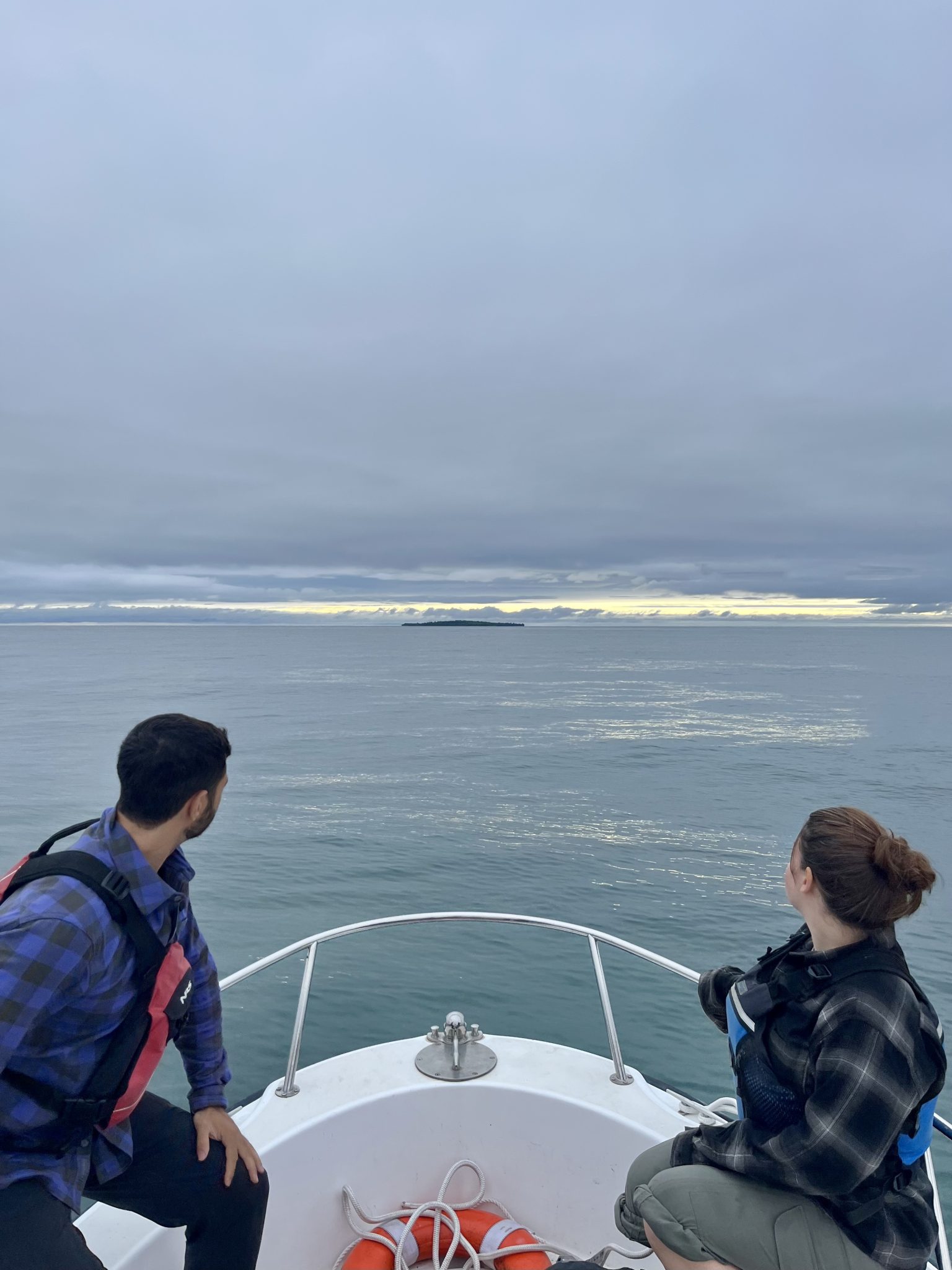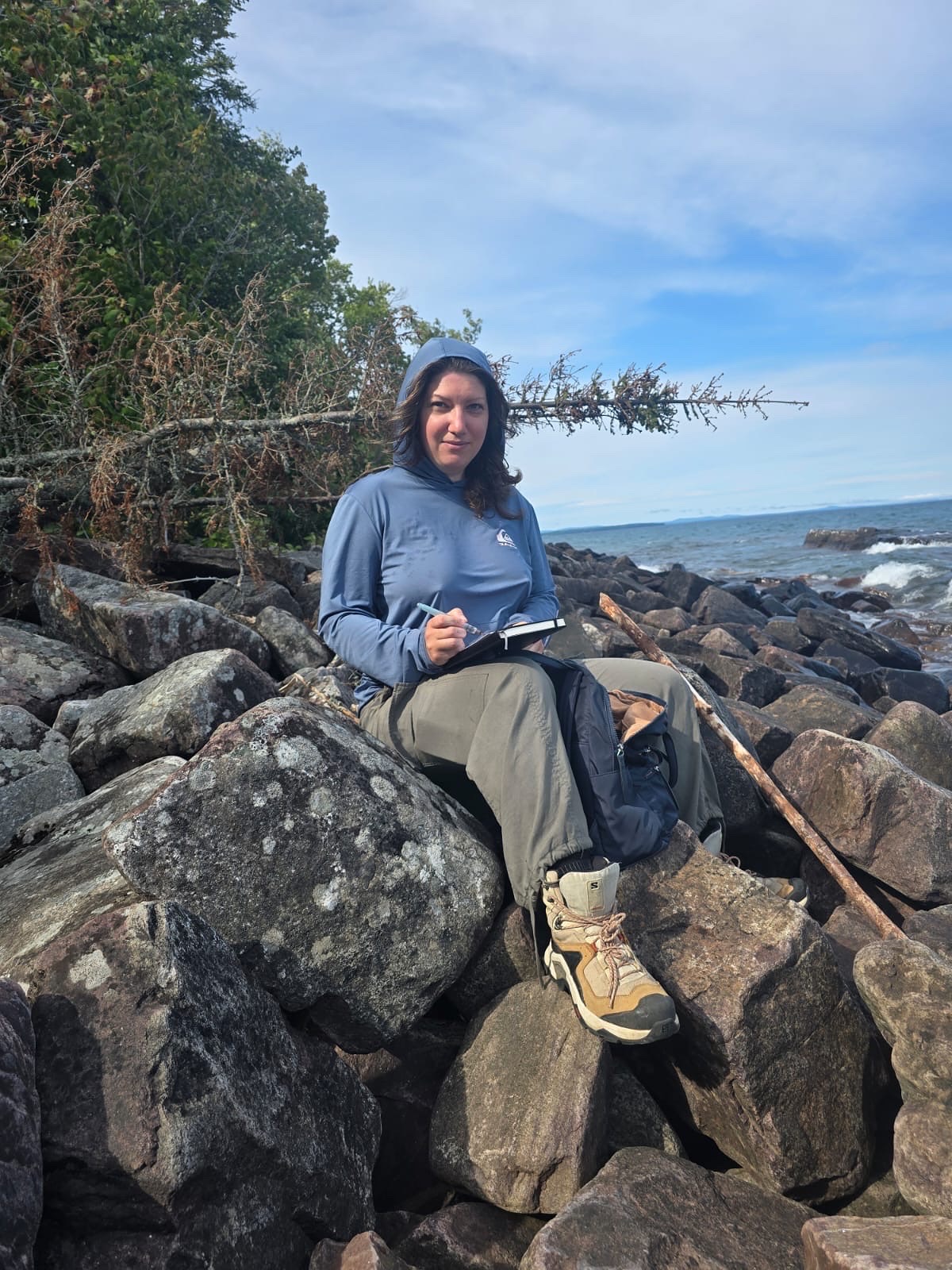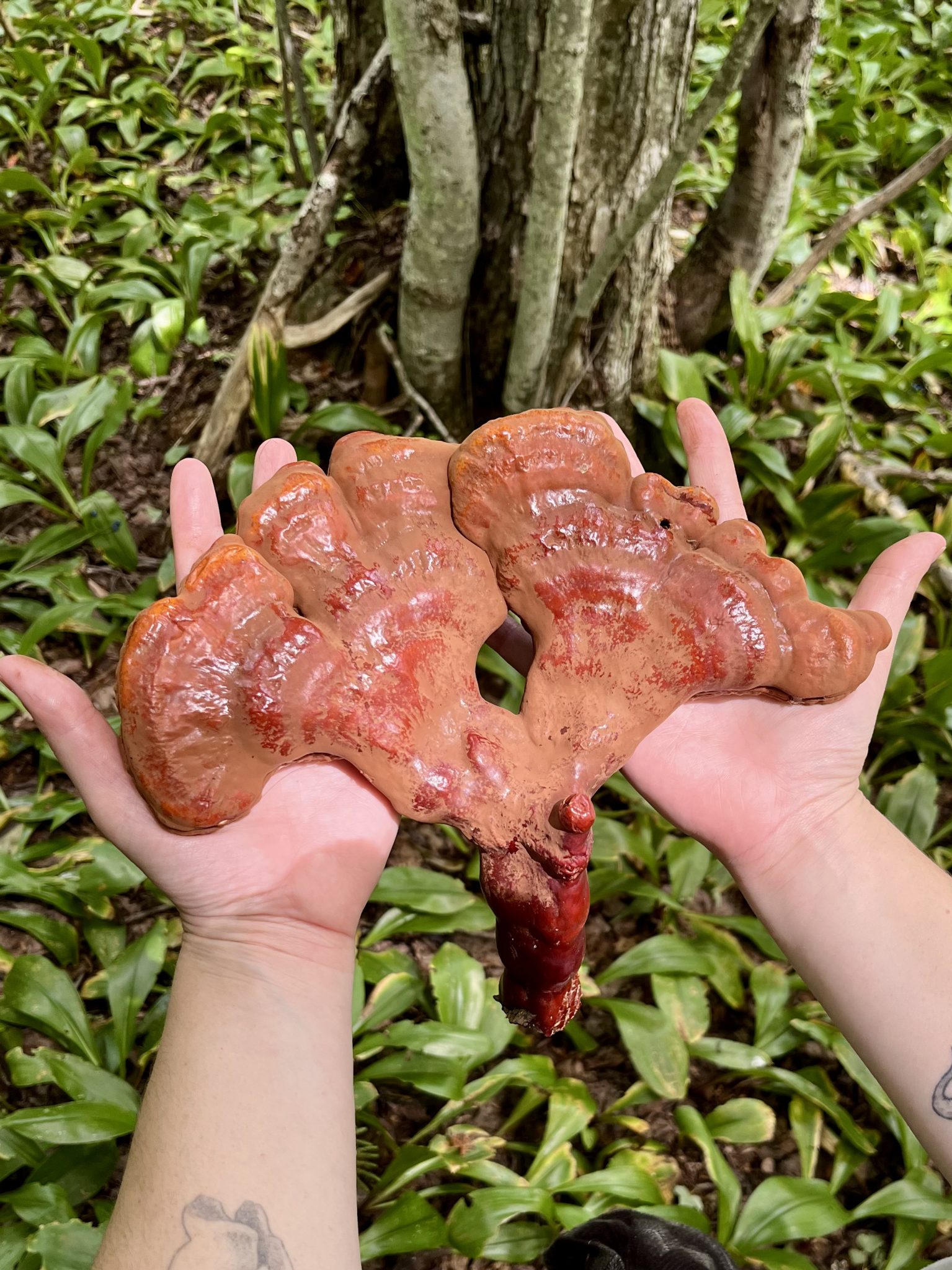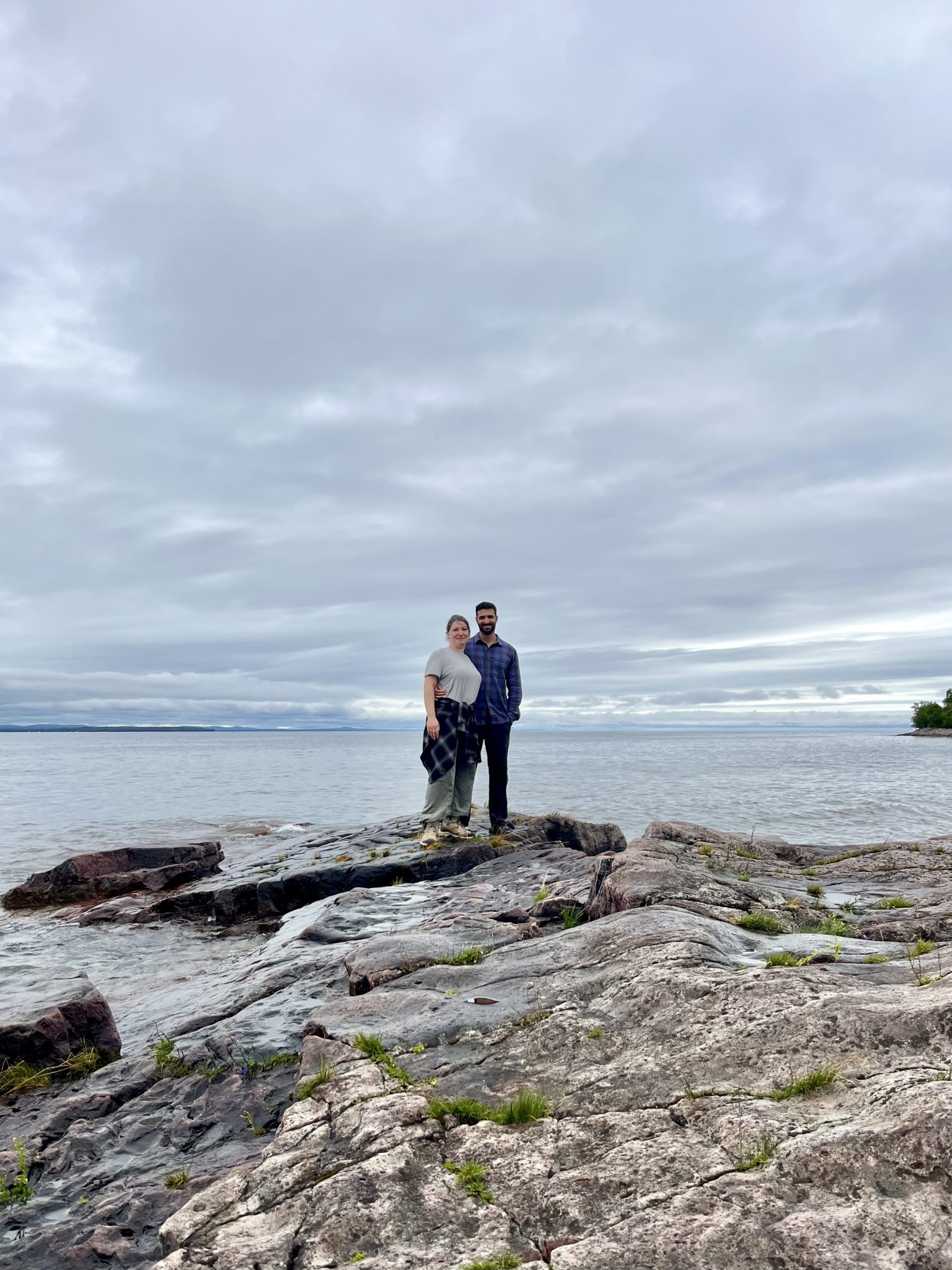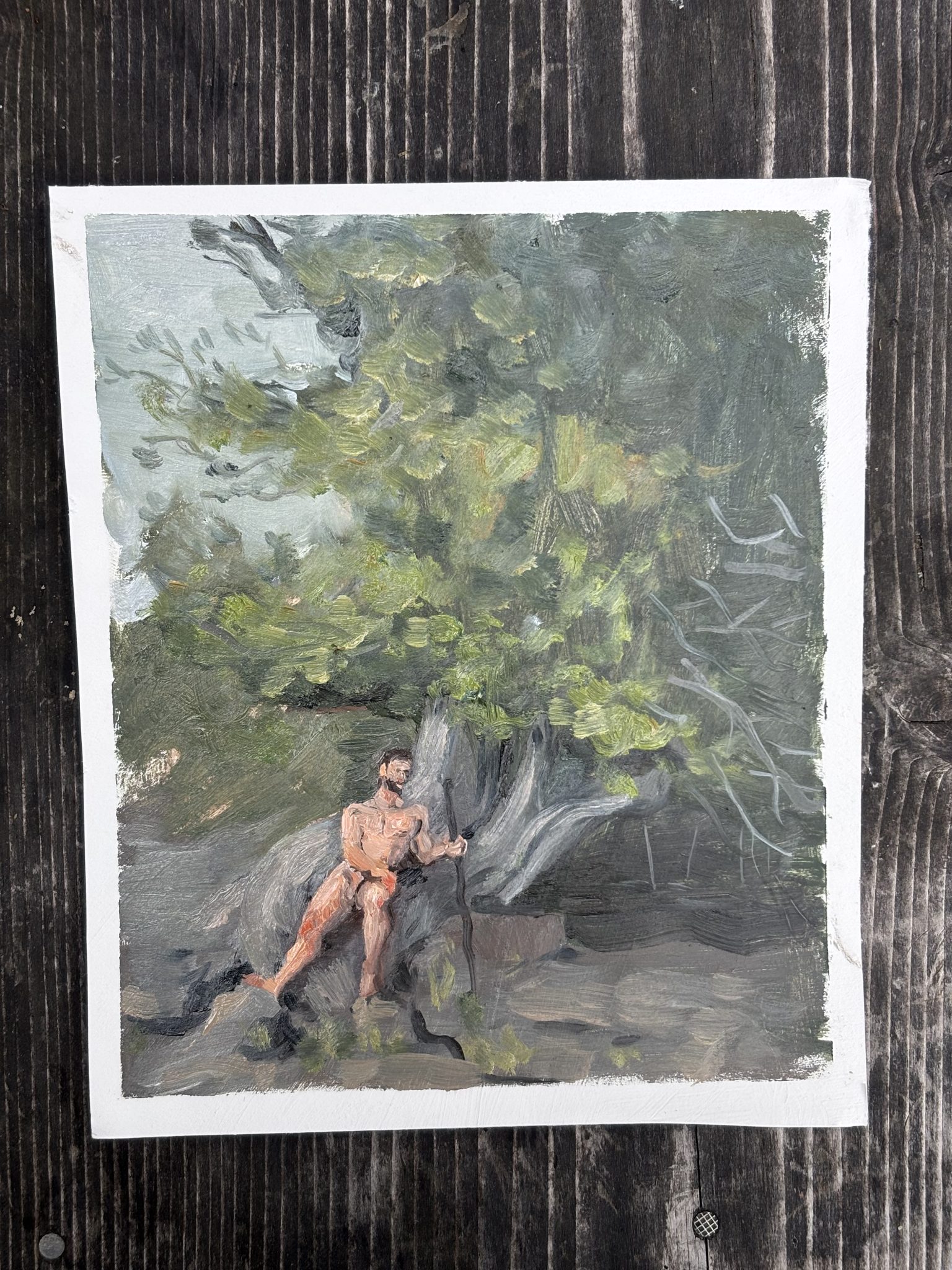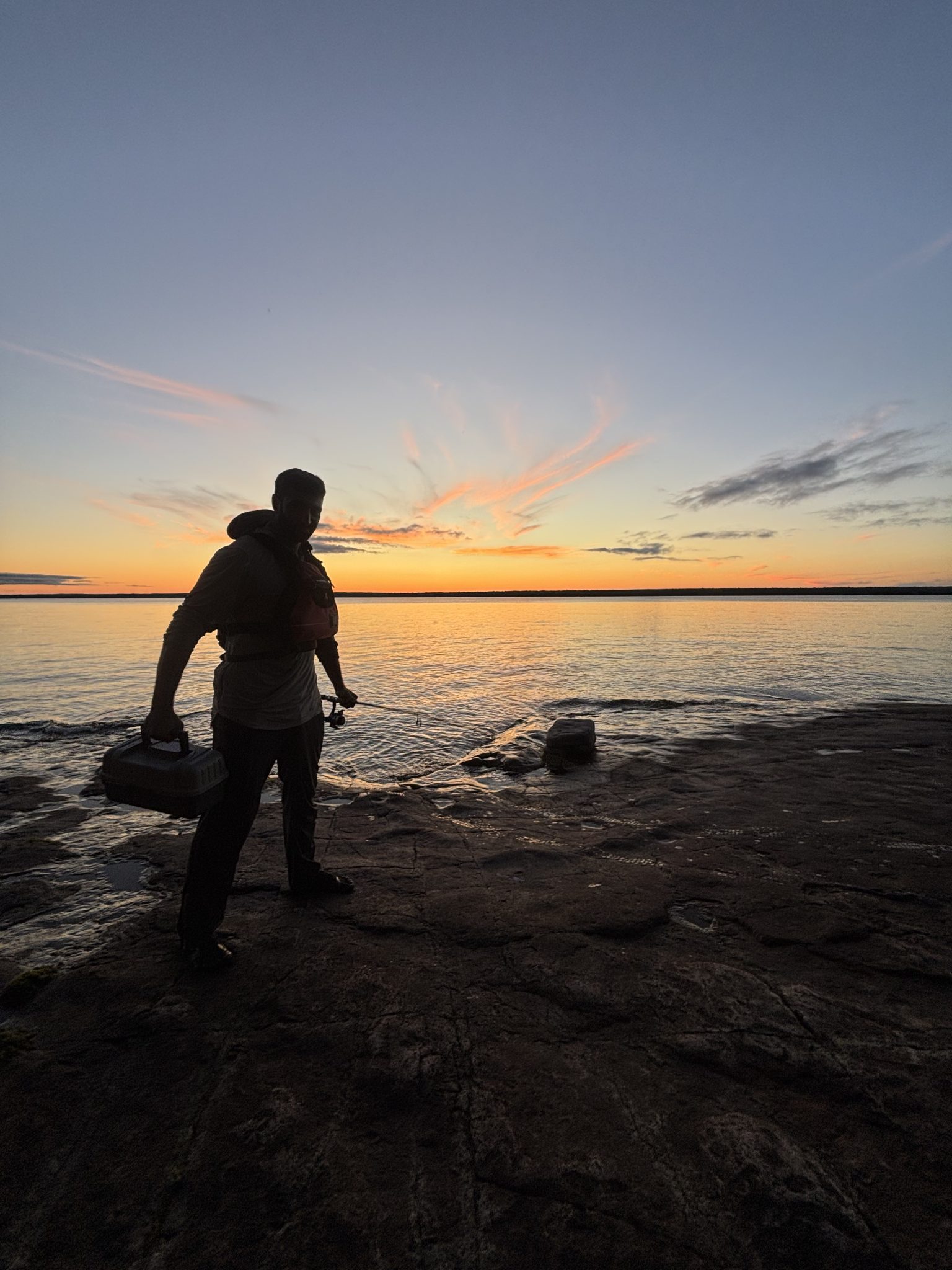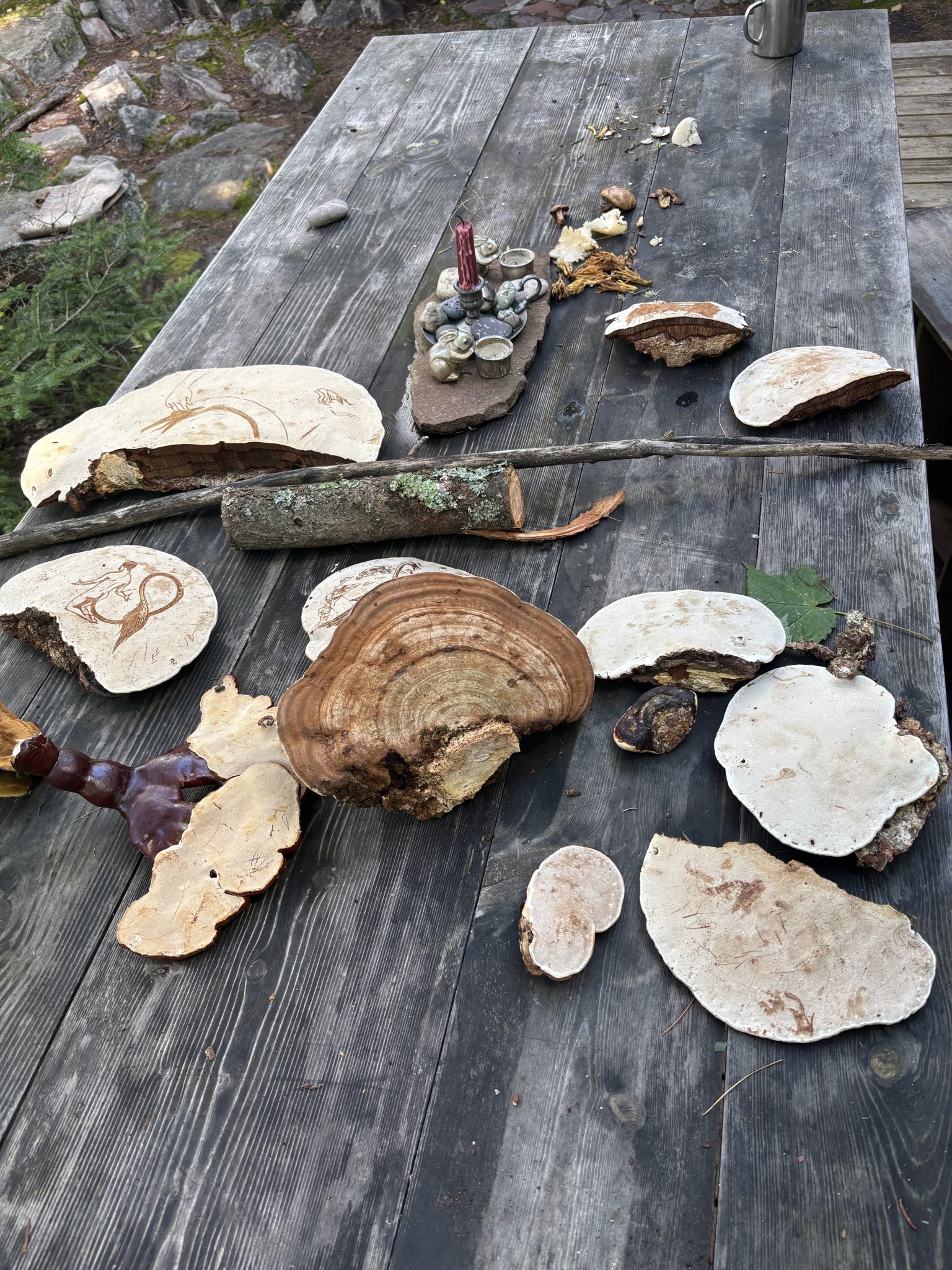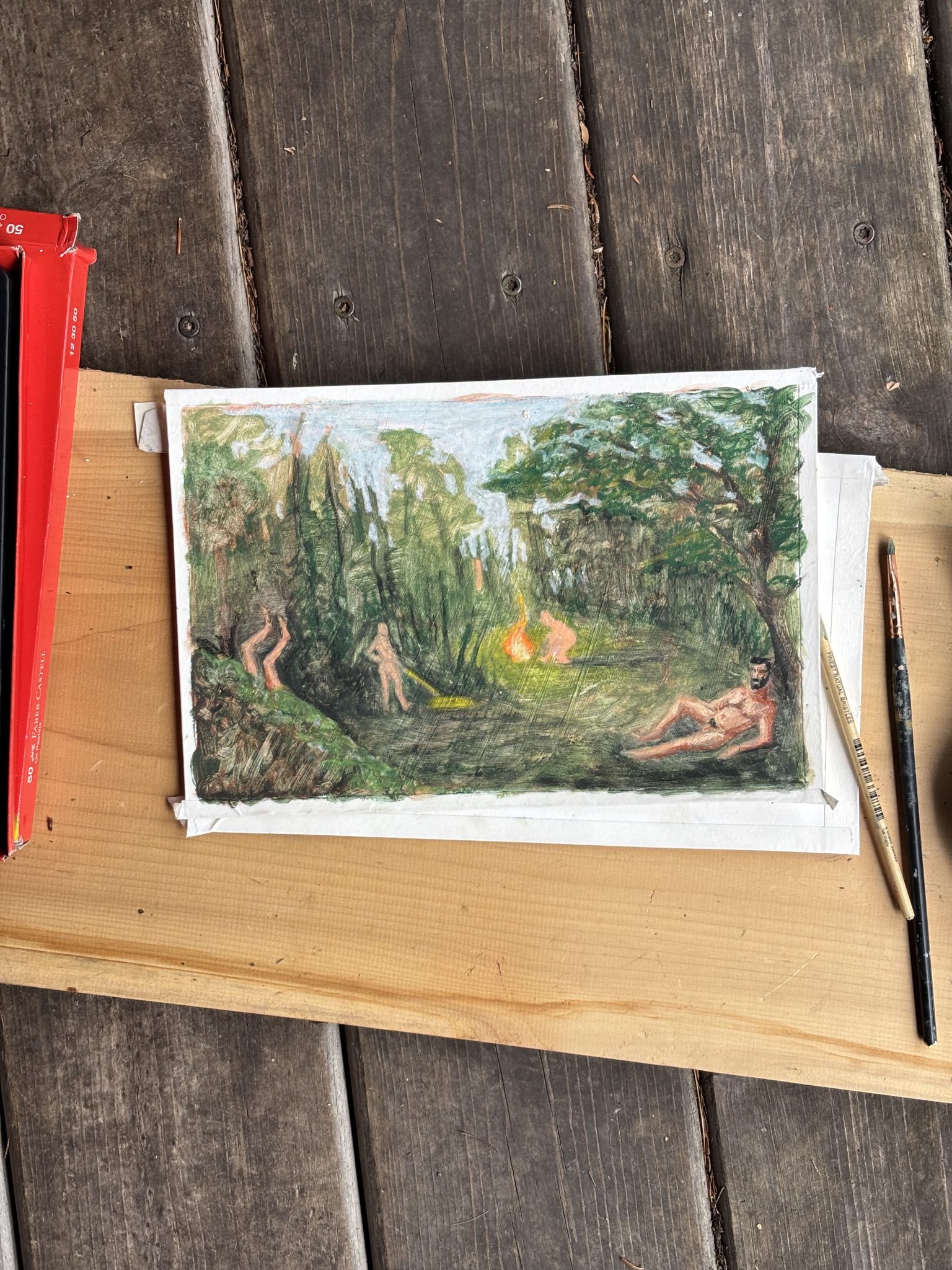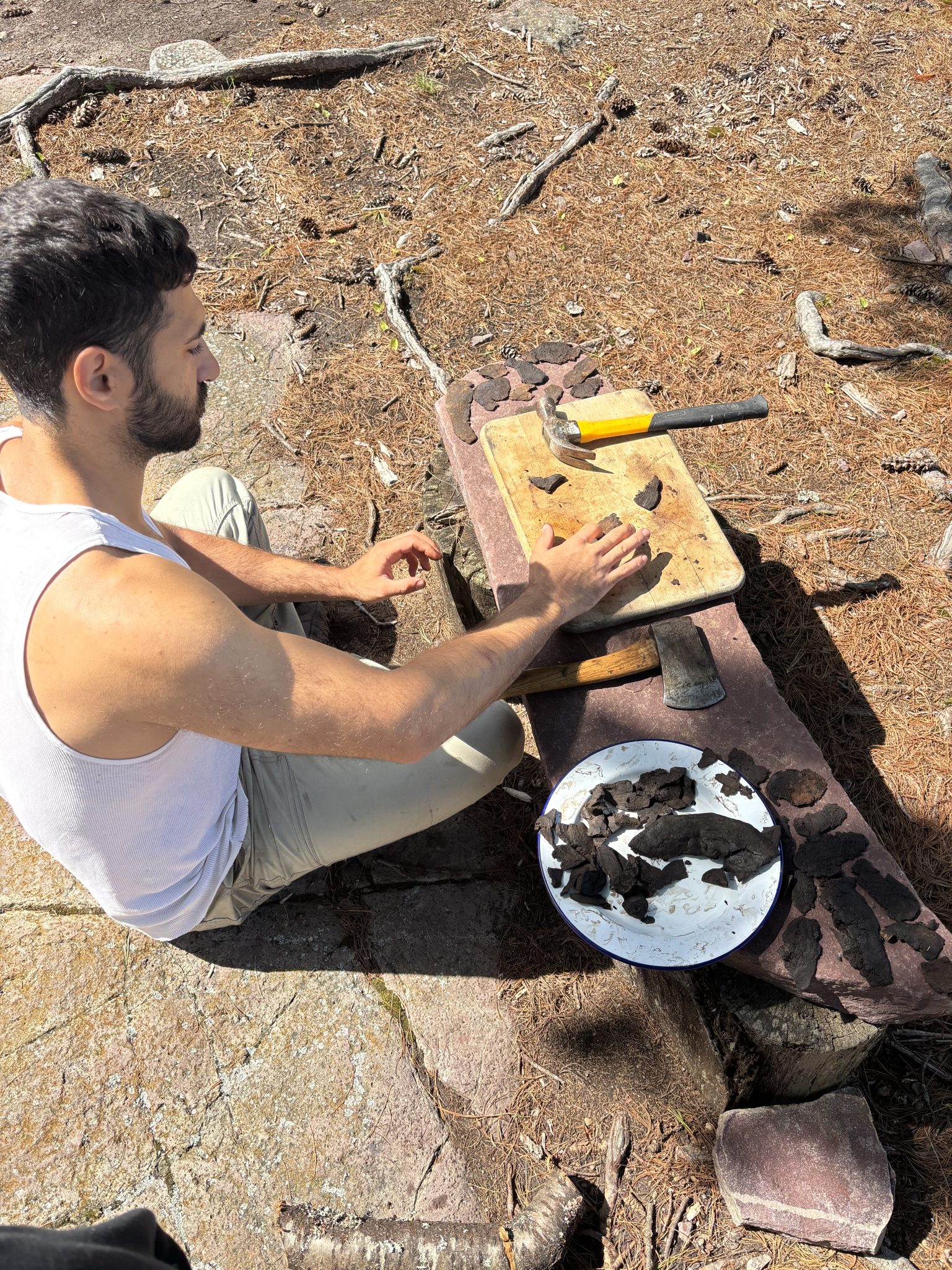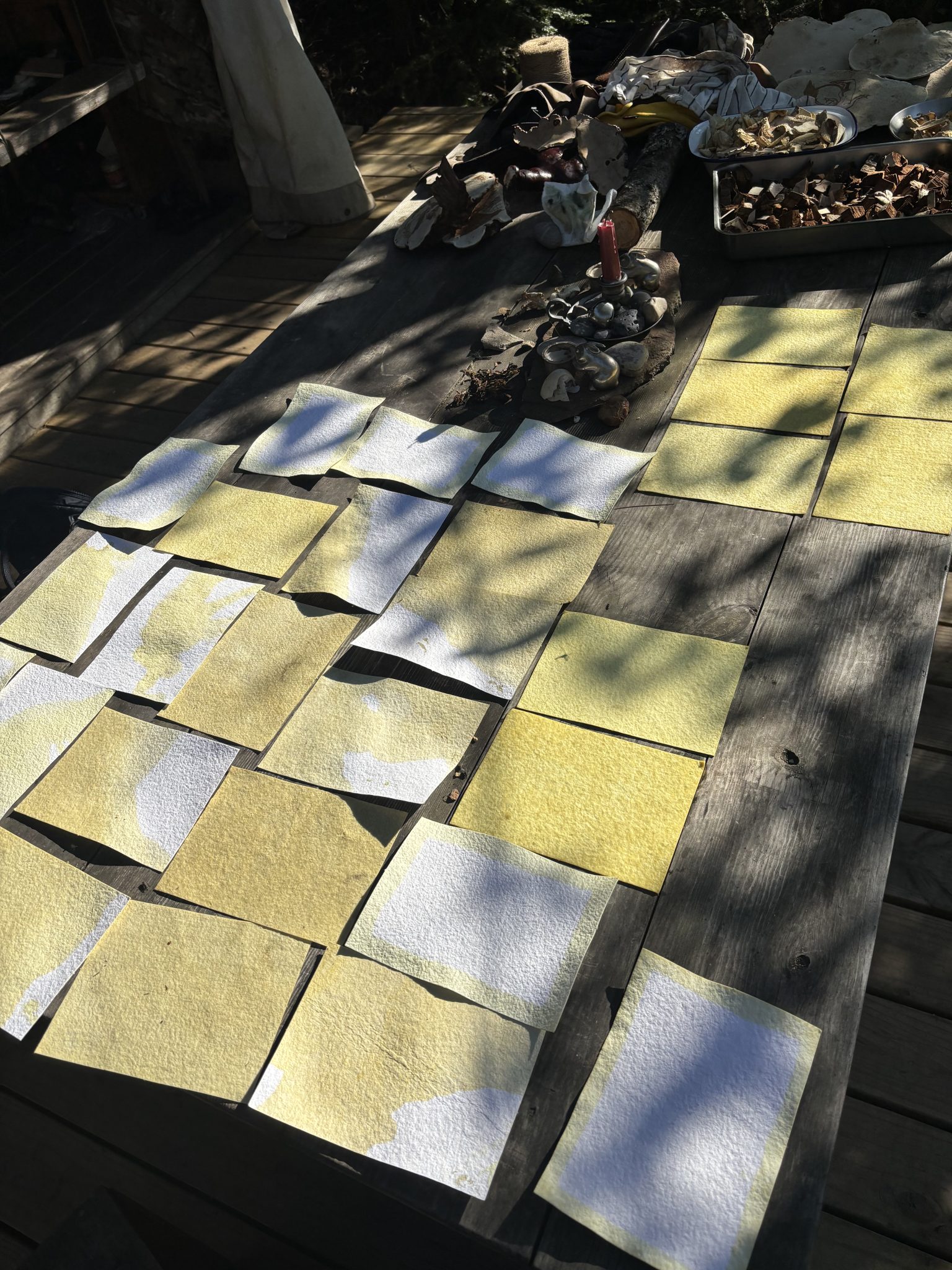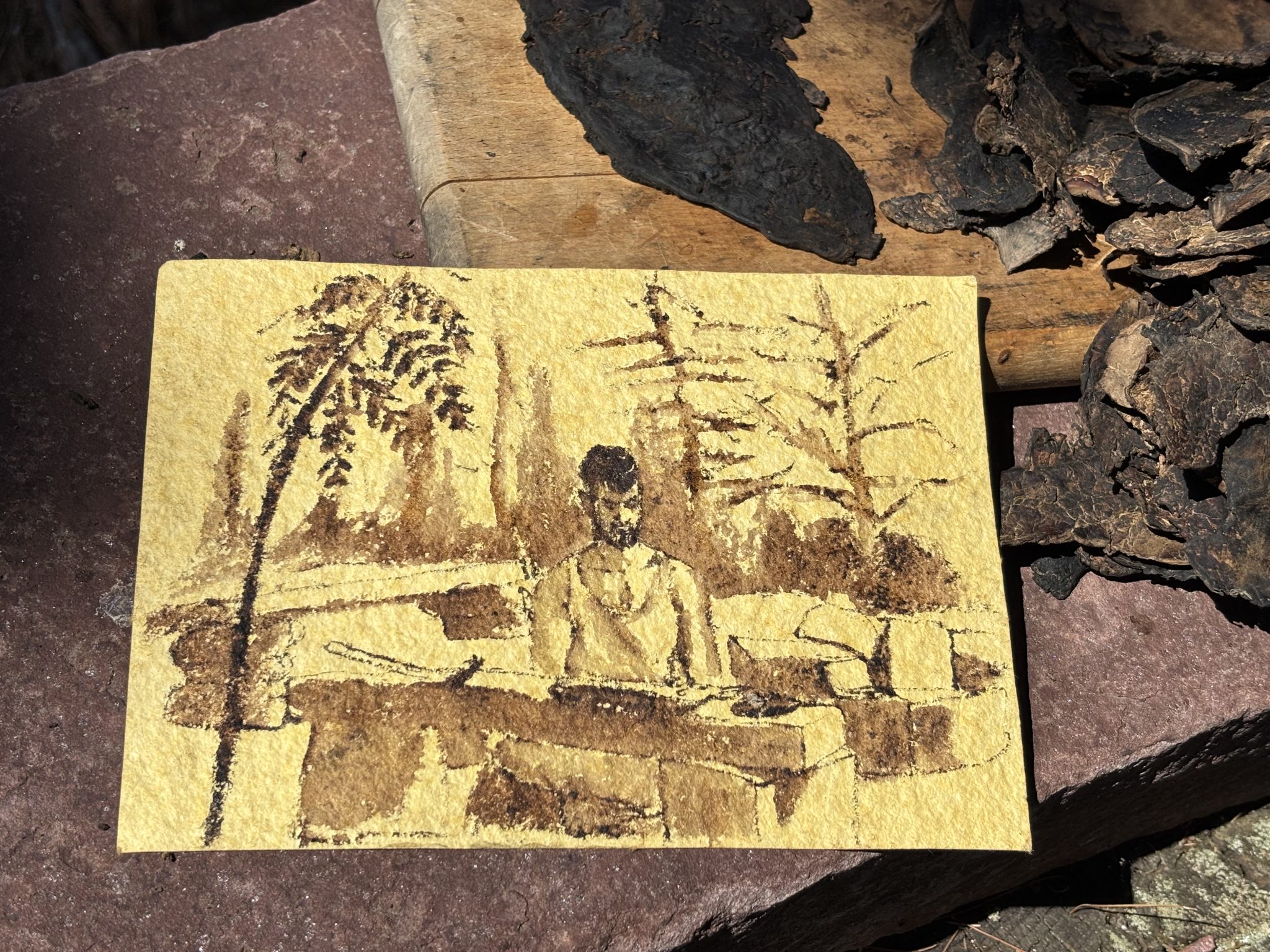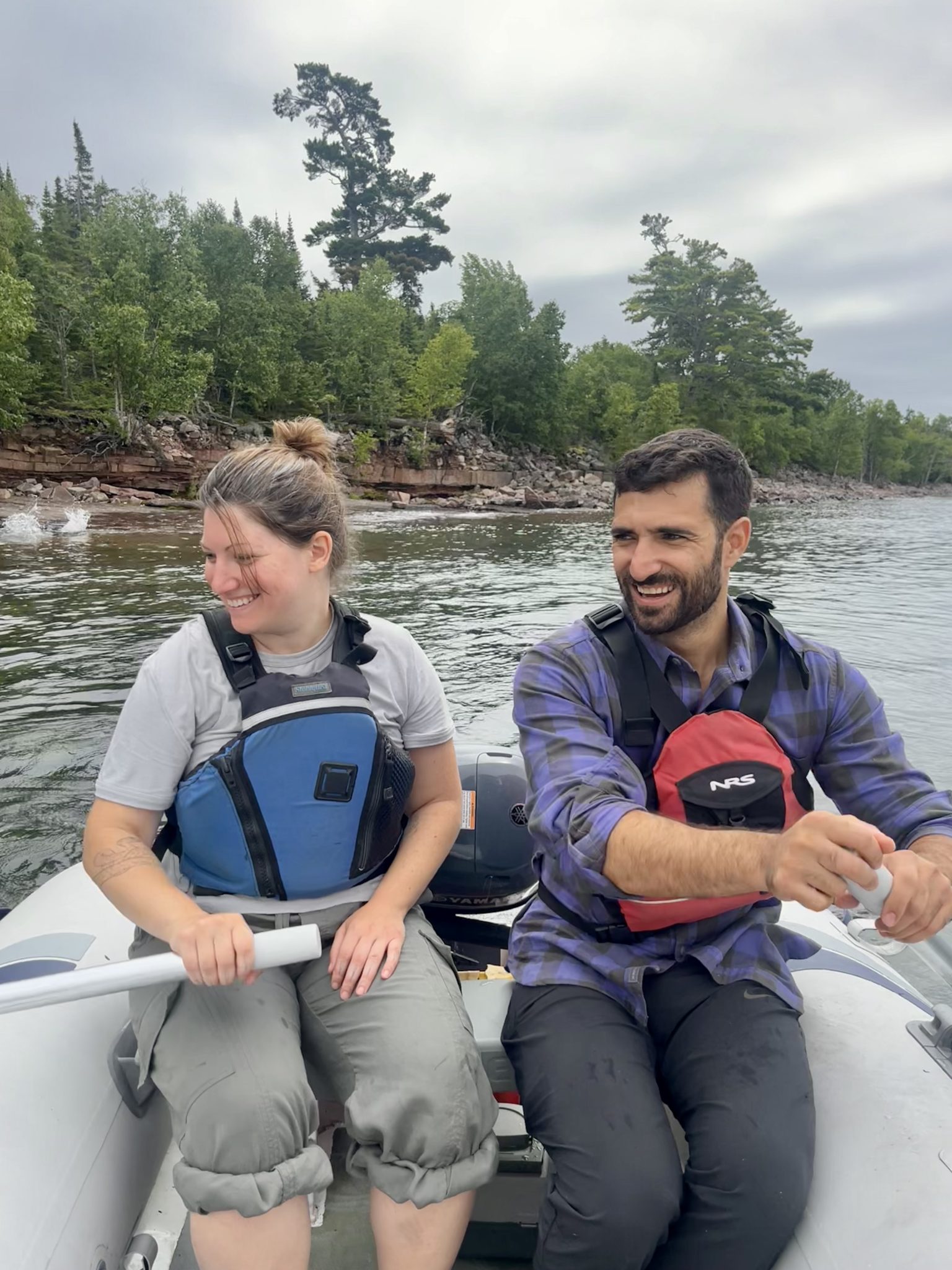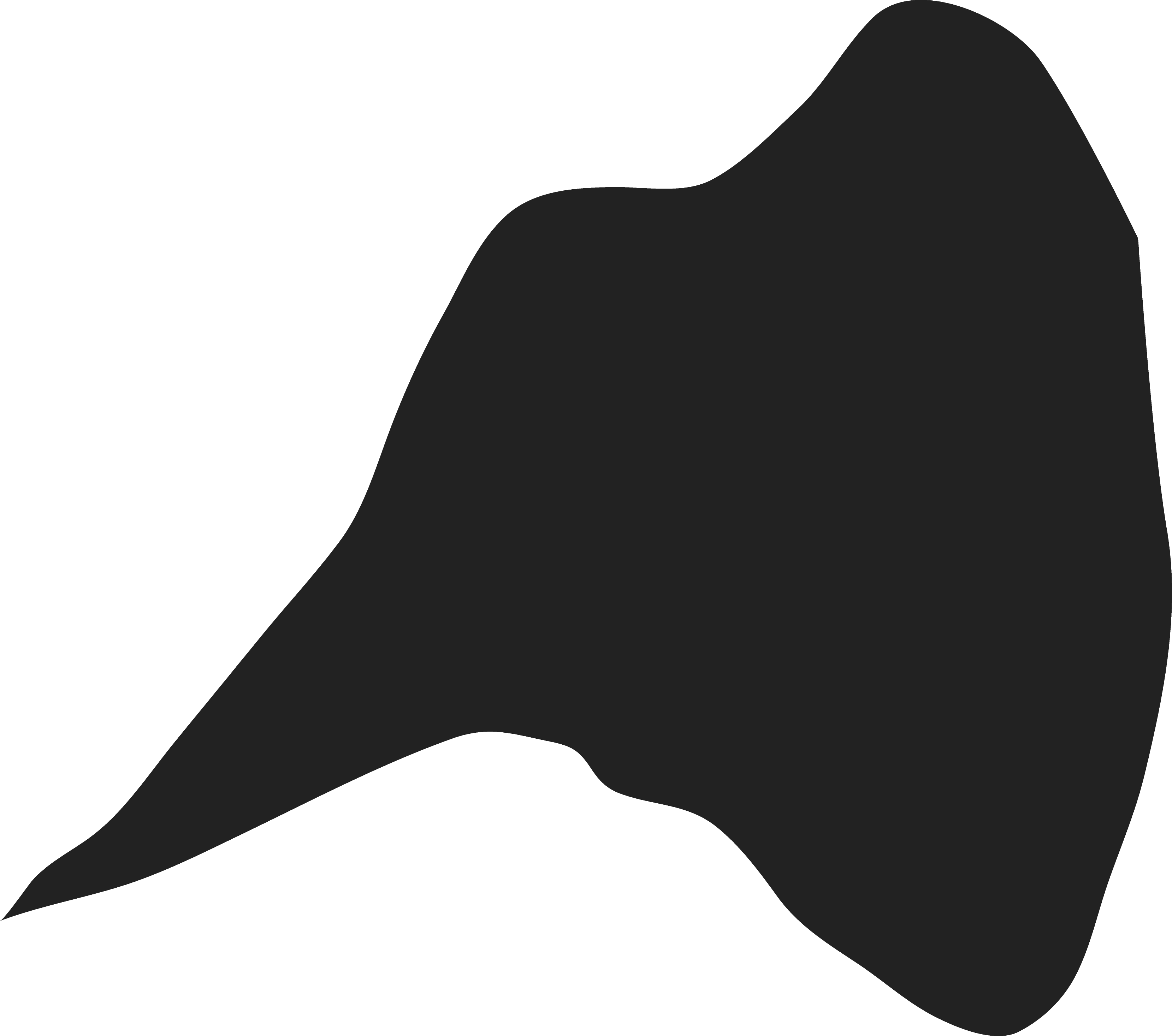My work is at the intersection of my identities as an American, a Ukrainian immigrant, a Jew, and a queer woman storyteller. In my most recent body of work, and my work in general, can be best described as a form of complex world building. Dozens of small narratives are combined on a single panel to form a grand, gods-eye view.
From a physical standpoint: they are highly textured oil paintings; touchable. They are precise yet reductive. I have resurrected an old painting medium, copper, which was used hundreds of years ago. Through it, I am able to achieve an enameled look with the paint while the visuals pay homage to medieval and renaissance imagery and motifs.
I take my time, I start with a sweeping landscape, or seascape. I paint my cast of characters like a director directing a play. They interact, often in unsettling ways, with each other and their environment. They laugh, they kill, they eat, they die. It is often difficult to distinguish any protagonists. Indeed, as in real life, there rarely are any.
Essentially, my paintings are a critical reflection of contemporary culture as it intersects with the universal and constant truths about the darker side of human nature. I use details of humor and whimsy, bodily function in all its ugliness. Taking a closer look is rarely boring. By combining ancient themes with contemporary ones, I strive to reinforce that history is always with us and within us. What drives us forward? What holds us back? And in what ways do we remain distinctly animal?
I was born and raised in the cities, as far removed from nature as one can be. My world has been one of concrete, fences, clear delineations of where to go and what to do. I am both in fear and in awe of being alone in a place where no such clean distinctions exist. From my perspective, nature is a concept, one that I explore now in my paintings. It is precisely the tension between the “civilized” man and his animal nature that I find fascinating. Our bodies and minds evolved in the untamed wilderness and now we find ourselves within the confines of square walls physically, psychologically and socially. These thoughts have formed the basis of my art practice at its core. There is symbiosis and there is a war within us. We take advantage of nature’s gifts as we shirk our responsibility to maintain its equilibrium. Humanity feels like a swelling virus at times, seeping into every corner, turning over every stone on our planet in search of what it would benefit us. In my painting, St Georges vs. The Dragon, nature is represented by a great dragon being taken down by small, insect-like humans; swarming and taking her down. But it is to their detriment. The fire engulfs them too.
I operate under the greater historical context of painting. Landscape painting has always been a fascination to me, particularly because it encapsulates that which cannot be contained, nature itself. And then it is hung on the square walls of a private home, grand castle or museum. It’s as if both the painter and patron can say they have captured the sublime. An artist can spend a lifetime on this endeavor, collecting the sublime moments of nature, or at least attempting to. And I too have this same yearning, with magic both in the observation and the translation.
Alone on an island, although with everything equipped for my survival, still means a profound solitude in an environment that is merely hosting me like a small, fleeting insect. I am there and then I am not. What does it matter to the trees? To the water? And yet, the position there does present a rippling impact on everything around me. The leaves I displace by my footsteps, the dirty water I leave behind after showering, and even the traveling I do to get there is not without impact.
On Rabbit Island, I will immerse myself in painting scenes of man in nature, with my partner, Alexander Costa, playing the part of my model and muse. The traditional job of the muse is to be observed in the hopes that inspiration will follow. I will document him in a series of drawings and paintings one normally associates with civil, polite studio painting. Except this man is in the wild, in his ancestral environment, or at least attempting to be with a certain kind narrative, theatrical and humorous flair my art generally embodies. Much like most people in contemporary society, here is a man that enjoys nature but never gets to immerse himself in it. Well here is his chance; and I will be in the woods observing like David Attenborough except with a sketchbook and not a camera.
I will also write extensively to elaborate on my thoughts of this interplay. I imagine a whole body of work that contemplates the human position in a vast world in which they both belong and accept and yet fear and reject; one which profoundly overpowers them and yet serves as a mere backdrop for their self discovery.
